Amateur Astronomer Describes an Experience Eclipsing All Others
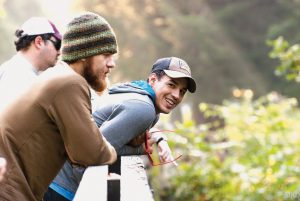
Matheny’s photography assistants for the day were fellow astronomy enthusiasts:
Carlos Iraheta ’17 (right) and Daniel Matheny ’18 (left).
MC professors encourage students to be lifelong learners and to reach for the stars when setting goals. David Matheny ’16 took that advice to heart when he organized a group of students from Roanoke College, along with Carlos Iraheta ’17 and Daniel Matheny ’18, to participate in events for the recent solar eclipse.
On August 21, 2017, I traveled to the Great Smoky Mountain National Park in Cherokee, North Carolina, along with a Roanoke College physics professor and a group of like-minded amateur astronomers to observe the eclipse. Because the park’s location was within the eclipse path of totality, thousands of visitors came to view the moon covering the entire face of the sun, a rare natural phenomenon. We spent the day as physics ambassadors, assisting park personnel in setting up viewing telescopes, distributing viewing glasses and handmade pin-hole viewers, answering questions, and leading visitors in safe observation of the eclipse.
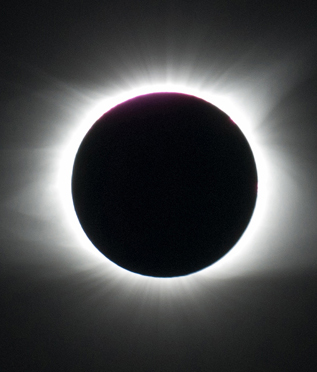 Viewing the sun’s corona was incredible, but some of the other celestial bodies visible during totality were nearly as amazing. Because the eclipse made the surrounding sky so dark, several planets, often difficult to see, almost jumped into appearance—in order of brightness, Venus, Jupiter, Mars, and Mercury. Also, easily visible was the brightest star in the constellation, Leo the Lion, Regulus. Situated very close to the eclipsed sun, we couldn’t miss the blueish beauty of the hottest and brightest of at least four stars that are seemingly one when observed by the naked eye. Sirius, the sky’s brightest star, along with two more bright stars—yellow Arcturus and Capella—also came nicely into view.
Viewing the sun’s corona was incredible, but some of the other celestial bodies visible during totality were nearly as amazing. Because the eclipse made the surrounding sky so dark, several planets, often difficult to see, almost jumped into appearance—in order of brightness, Venus, Jupiter, Mars, and Mercury. Also, easily visible was the brightest star in the constellation, Leo the Lion, Regulus. Situated very close to the eclipsed sun, we couldn’t miss the blueish beauty of the hottest and brightest of at least four stars that are seemingly one when observed by the naked eye. Sirius, the sky’s brightest star, along with two more bright stars—yellow Arcturus and Capella—also came nicely into view.
Some stunningly beautiful features of the sun provided a real “wow” factor and definitely pleased the crowd. In fact, we heard gasps and cheering upon totality. The spectacular Baily’s Beads, thin slivers of sunlight that dance in and out of the lunar mountains and valleys along the edge of the sun—seemingly shooting off the sun’s surface—provided the most spectacular astronomical fireworks display. The sun’s chromosphere, the thin band of deep, beautiful red that hugs the solar disk, was also a thrill to see. The long, fine, silver prominences seemed to explode into the night sky. Through the telescopes, we also saw coronal mass ejections, super-heated and charged matter from the sun’s surface, which are many times larger than the entire Earth.
It was incredibly exciting to call the “glasses off—safe to view” (when totality occurred), which was also the signal for people to remove the protective film from cameras and telescopes. In our location, totality lasted only one minute and 48 seconds, and I needed every second to capture the images. I used two Nikon DSLRs: one camera mounted on a Celestron five-inch telescope, and another to shoot through a 300mm lens. My brother, Daniel, was my main camera assistant, so he made sure I had everything I needed and kept me posted on timing so I knew the sequence of the eclipse. The whole event lasted about four hours, so I needed to have someone time shots for me while I was doing the techni-cal side of capturing the images. Timing was critical during totality when I was totally absorbed and needed to know when a certain phenomenon was happening, like the Baily’s Beads and the diamond ring at the beginning and end of totality. My brother also kept the telescope in alignment throughout the partial phases of the eclipse. Although I was the one with my finger on the camera’s shutter, my brother should also get credit for the photos. I couldn’t have done it without his support.
To capture the crowd’s reactions, I also mounted two GoPros on fences and the ground. A pair of rotating egg timers gave the motion effect.
Also notable was the 12.6 degree (F) drop in temperature during the eclipse, as well as dancing shadow bands that we saw moments before and after totality. It was amazing to be among people who all shared the thrill of the experience, and I was “over the moon” to fulfill my dream of capturing this incredible event in photographs. I hope that by helping guests safely view the event, it will pique a curiosity and desire to continue to learn and observe science in action. I hope to see you—and report for Insights—at the next total solar eclipse in 2024.
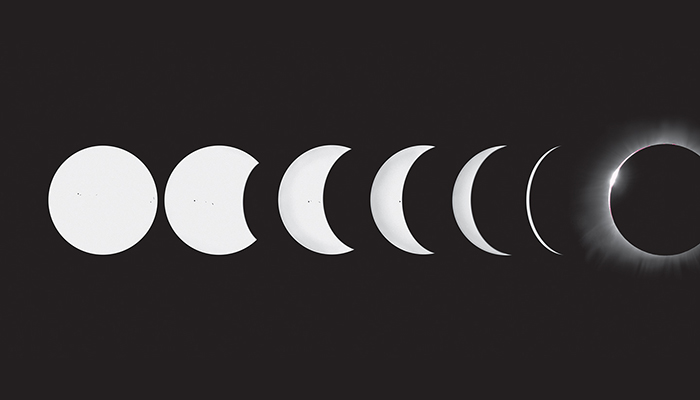
Progression of shots taken approximately 10 minutes apart. All images are real to life, with the only editing being an increase in definition and darkness of the sunspots by two F-stops and the elimination of a small lens flare for the image of totality.
— David Matheny ’16
Photography by David Matheny




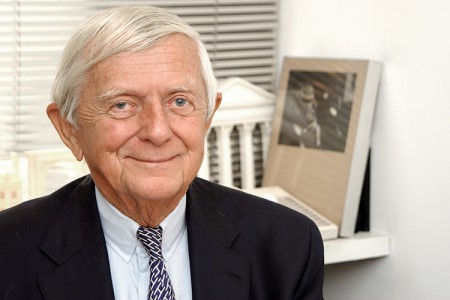

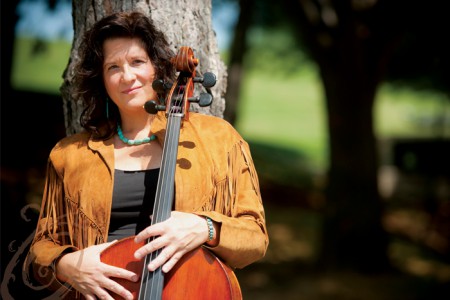

Follow Us